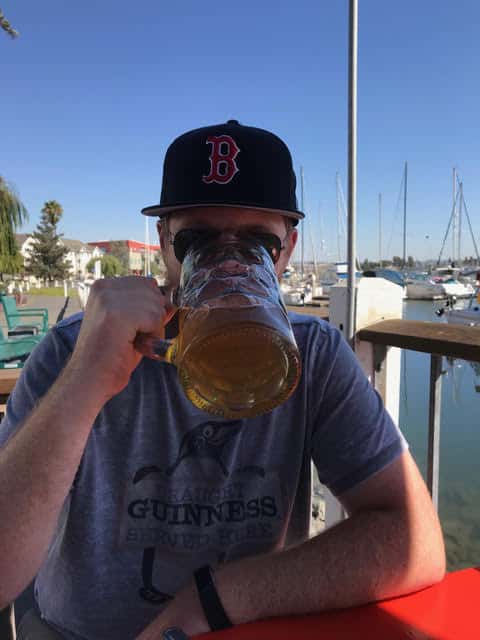
Top Content From Tom
Craft Beer Pricing Guide (2024)
UPDATED: 2/14/24
Over 2023, challenges in the American economy with inflation directly affected the price of many goods, including beer.
Indeed, the data seems to support that prices for craft beer have increased across major styles and formats.
According to the U.S. Bureau of Labor Statistics, the Consumer Price Index for beer at home rose +2.4% year-over-year (YoY), higher than the +1.9% YoY increase reported in 2023. However, the report did show that the increase has slowed since January 2023, which recorded a +9% YoY increase.
Last year, Untappd reported that across all U.S. retailers from March 2022 to December 2022, the average price of American light lager (per 16oz draft) increased +3.3%, to $4.94, while this style in 12oz bottles, also increased +3.4%, to $3.91.
And if you thought this might just be unique to lagers, Untappd also analyzed price data for American IPAs. On draft, this style’s price increased +1.9%, to $6.88 in 16oz cans. And increased +3.7% in 12oz bottles to $3.97 over that ten-month period in 2022.
“Brewery taprooms have seen solid price increases across three styles we examined,” Smith wrote in the report. “Across all venue types, however, the lower priced American light lager saw the largest price increase on a percentage basis.”
He continues, “I’ve spoken with a number of independent brewers that were unsure about taking price increases in 2022 (some macro producers took two price increases). It appears, based on the pricing data we see from beers coming out of A-B InBev’s craft unit, that there is ample headroom for smaller producers to take more price in 2023.”
Alcohol Delivered gathered data on average case prices for a 24-pack of Bud Light and Miller Lite across the country in 2024. Their data showed the cheapest price at $16.43 in Illinois all the way to the highest at $33.62 in Alaska.
Overall, considering how to price your products this year is going to be one of the most important business decisions you make.
And it’s a tough thing to nail.
If you price too low, you leave money on the table. But if your product is too expensive, it won’t sell.
When it comes to pricing beer or cider, there are several things to consider. But first and foremost, you need to answer one important question: What type of business do you have?
Do you run a bar or restaurant offering on-site consumption? Are you a bottle shop that only offers to-go products? Do you provide on-site consumption and a selection of products to-go? Something else?
Before you can start to understand pricing, you need to think about what you sell. For instance, pouring beer on draft versus serving it in a can or bottle carries a different cost. With the average cost to serve a bottled beer at twenty-five percent and draft beer closer to twenty percent, draft beer might be your highest margin item, but might also come with added expenses for refrigeration and pouring equipment.
It can seem like a lot, but getting the price of your products right can mean more profitability for your establishment and a better bottom line.
And we’re here to help.
The Advantages of Adding Mocktails to Your Menu
The latest buzz in craft beverages, whether beer, wine, or spirits, is the rapidly growing “better for you” category of drinks. Consumers want tasty choices when they go out for a drink. But that doesn’t always mean they are looking for the alcohol to go along with the flavor.
According to research done by FiorMarkets, non-alcoholic drinks are expected to grow at about eight percent per year, globally, through 2028. That means huge opportunity for non-alcoholic producers and plenty of room for exciting new brands to get in on the game.
Especially when it comes to cocktails, the health-conscious trend has led to lower-calorie and low- or no-alcohol refreshments.
Often dubbed “mocktails,” these alcohol-free drinks are simply cocktails without the alcohol. They can run the gamut from mimicking a classic cocktail like an Old Fashioned (minus the whiskey) or be a completely from-scratch recipe. Either way, the mocktail has opened new creative doors to bartenders all over the country and helped business owners boost their bottom lines.
In the past, non-alcoholic drinks have been an oft-maligned category, dismissed as flavorless, bland beverages. Drinking booze-free used to mean sacrificing flavor and enjoyment. But in the midst of the craft beverage revolution we find breweries and bars proving that notion entirely wrong. Today, bars, restaurants, and breweries across America have developed flavorful, inventive, and attractive mocktail menus that cater to everyone.
These sober drinks are something that you should consider adding to your menu to attract a variety of consumers.
The Comprehensive Guide to Pricing Liquor
Many bars and restaurants offer a wide selection of alcoholic drinks, including beer, cider, wine, and spirits. While we’ve written extensively on exactly how to price your craft beer selection, finding the right price for your liquor drinks is a different game. Liquor prices that are too high could turn customers away while prices set too low could affect your bottom line. Because of this, a business owner needs to find a sweet spot in order to retain guests while simultaneously making a profit.
Mastering the pricing calculations of liquor drinks is an art because many factors go into determining the price, including how you serve your drinks, drink pour size, the competitors in your market, and your customer demographics. However, there’s also a science to pricing liquor drinks, and that’s what we’ll cover in this article.
